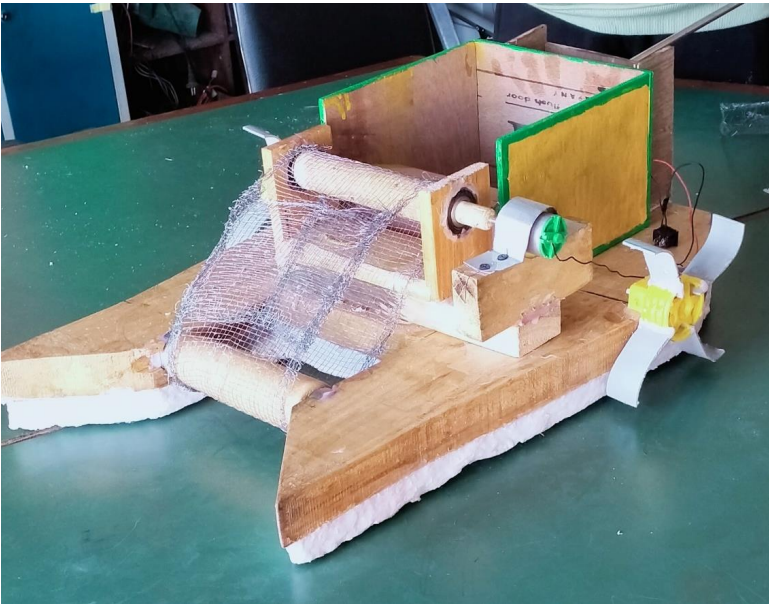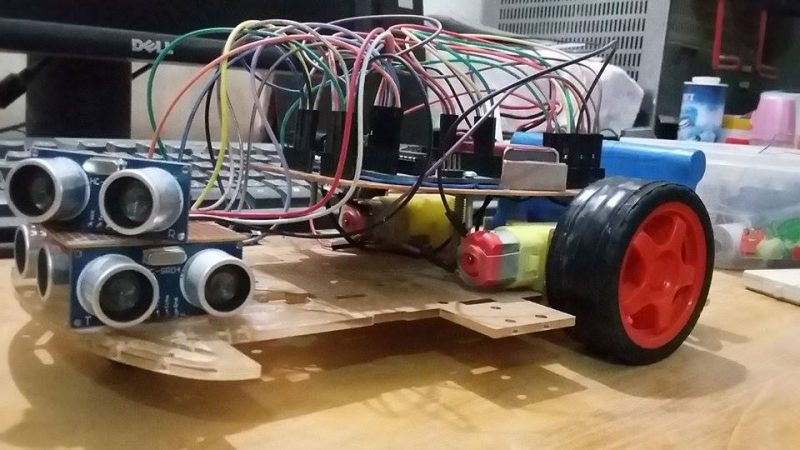Trash Collection Bot
The problem of unsystematic aquatic trash disposal in Kathmandu has becomea major issue contributing to the pollution of the environment with nearly315,069 tonnes of trash being dumped on riverbanks annually. To clean theseunsystematic disposals a lot of human labour is required. This is where ourproject kicks in. The project “Design and fabrication of Trash Collection Boat“introduces a system of already existing concepts of collecting aquatic trashwith the help of a boat equipped with a conveyor belt, electronics and a set ofmechanisms for moving the boat with much reduced human labour. The projectemphasises on a conveyor belt mechanism built with GI wire mesh as the beltpowered by a 100 Rpm 12v Gear motor which collects trash and collects themwith the help of a trash bin made of plywood. Along with this, a double paddlewheel concept mounted on the base made with the help of PVC pipes andpowered by 2 Double Shaft BO motors. The motors and the propeller poweredby an Arduino chipset helps operate the conveyor belt and the boat forward,backward and change directions by introducing a differential among the paddlewheels. All of these operations are controlled with an android phone whichtransmits signals to the Arduino chipset with the help of HC-05 bluetoothmodule. All of these components sit on a base made of Sallo wood having lowdensity to accommodate more weight of trash. A styrofoam base has also beenstrategically added to the lower base to provide additional buoyancy to the boat.The completion of this project resulted in a boat capable of collecting trash on asmaller scale and limited area. The implementation of these fabricationprocesses, modifications to calculations and existing literature review can resultin a live model of the trash collection boat which can contribute to reducingaquatic pollution with minimal human labour. Project Member:
Trash Collection Bot Read More »


